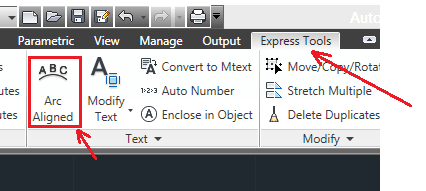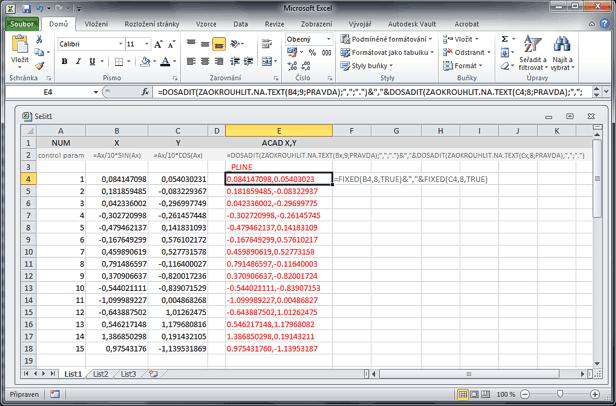
The upper limit of 200 is generally not a factor anymore as most tools that read and write GDSII can support many more vertices - 1024 or 2048 or 4086. The inside of the boundary is solid.Ī boundary may have no less than 3 vertices and no more than 200 vertices. The first and last vertex must be the same.
Curved text in autocad series#
One of the two basic entities in GDSII is the boundary.Ī boundary consists of a series of straight segments forming a closed area. However it is bad practice to locate your data "far" away from the origin. It is also OK to locate 0,0 near the lower left of your data extents. If you don't know this would be the default.

In the semiconductor business, GDSII data is often centered around 0,0. If you feel the need to hatch, you can do so but realize that the hatch entity will be ignored by the ASM 3500 translator. Some designers think that they should use AutoCAD's hatching command to indicate filled areas on the mask.
Curved text in autocad free#
However you are free to use descriptive names such as POLY, M1 and DIFF as long as you know which GDSII layer number you will map these names to. dxf2gds and gds2dxf translators do include a method of controlling AutoCAD name to GDSII layer number mapping if needed.

We suggest that you do the same with your AutoCAD layer naming scheme so that there is less chance for confusion. The translator will not map these to the GDSII database correctly. AutoCAD modifies the coordinates of entities entered while a different UCS is in effect. Make sure that you set UCS (user coordinate system) to WORLD and that you do not modify the Vpoint. If you are designing a mask for a microsensor you should draw in units of microns - i.e., a line of width 5 represents 5 um wide. Common GDSII units are in microns for most semiconductor applications. You should work in the units that the final GDSII system will use if possible. AutoCAD's UNITS command affects only the display and does not set drawing units. Failure to do this may result in the GDSII data snapping to the nearest grid point and possibly corrupting your intent.ĪutoCAD is dimensionless. This will insure that each point entered in AutoCAD can be exactly mapped to GDSII. A typical grid value if you were drawing a semiconductor would be 0.5, 0.1, 0.25, 0.01 or even 0.001 for units of microns. To get a GDSII database that exactly corresponds to the AutoCAD drawing, you should set a grid in AutoCAD and then use that grid for snap purposes. GDSII is an integer database AutoCAD uses a double precision database that is not really grid based. Since your intention is to transfer information accurately to GDSII you should set up your AutoCAD drawing environment as closely as possible to the equivalent drawing environment for GDSII systems. Setting up the AutoCAD Drawing Environment This document summarizes good drawing practices. Since the GDSII file is usually processed one more time to create mask data, there may be additional limitations imposed on what you may draw by the mask making machine. Therefore, not every entity in AutoCAD has a corresponding element in GDSII.

The two databases are not organized alike.
Curved text in autocad software#
Drawing Design Rules for DXF to GDSII Drawing Design Rules for DXF to GDSII Steve DiBartolomeoĪSM 3500 converts AutoCAD DXF files into GDSII so that AutoCAD users can send their drawing files to IC design software or to mask making machines.


 0 kommentar(er)
0 kommentar(er)
